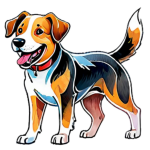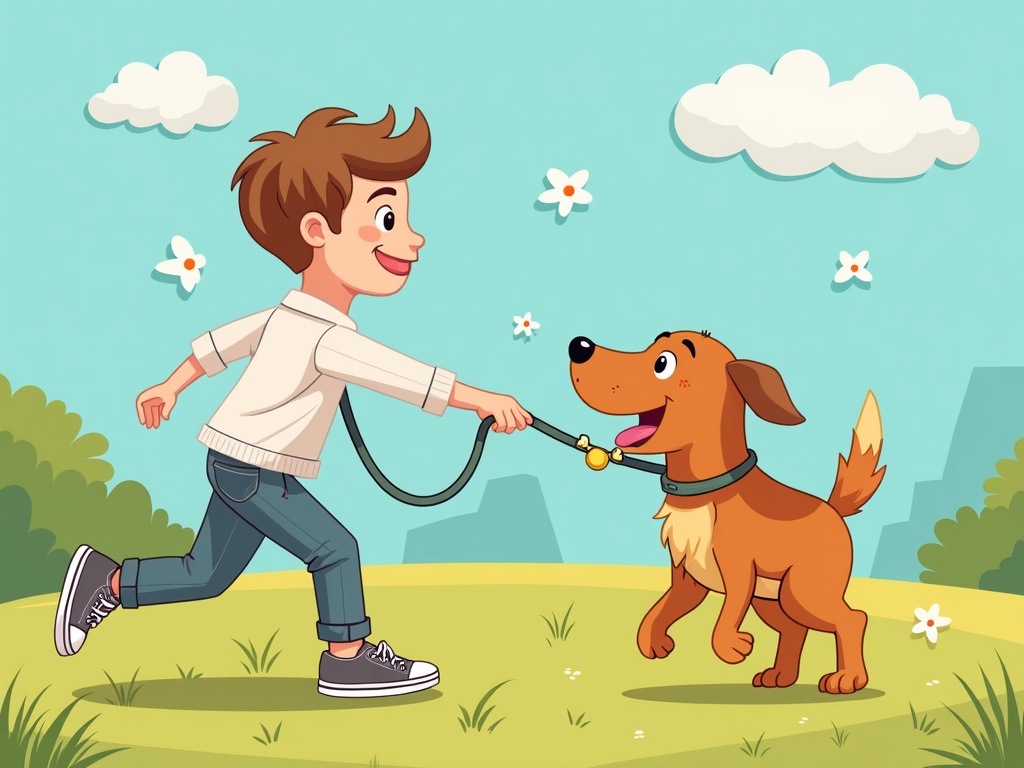Unleash the Fun: Mastering Loose Leash Walking with Engaging Games
Imagine a leisurely stroll through the park, your dog sauntering happily beside you, the leash slack and U-shaped. No more arm-wrenching, frustrating tug-of-wars! This idyllic scene isn't just a dream; it's achievable with the power of positive reinforcement and a playful approach to loose leash walking training. Forget the rigid drills; we're diving into a world of games that transform walks into enjoyable bonding experiences for you and your canine companion.
Why Games are a Game-Changer for Loose Leash Walking
Traditional leash training often relies on corrections and pressure, creating a negative association with walks. Games, on the other hand, tap into your dog's natural desire to play and learn, making training more effective and far more enjoyable for both of you. They build engagement, focus, and a positive connection, setting the stage for a relaxed and harmonious walking experience.
Think of it this way: would you rather learn calculus under the stern gaze of a grumpy professor, or while participating in an interactive, engaging workshop? The same principle applies to your dog! Games make learning fun, which translates to faster progress and a stronger bond.
The Core Principles of Game-Based Loose Leash Walking
Before we dive into specific games, let's establish the underlying principles that make this approach so successful:
**Positive Reinforcement:Reward desired behaviors (loose leash!) with treats, praise, or a favorite toy.
**Focus on Engagement:Capture your dog's attention and keep them engaged throughout the walk.
**Short and Sweet Sessions:Keep training sessions brief and positive to prevent frustration and maintain focus.
**Consistency is Key:Practice regularly, even if it's just for a few minutes each day.
**Be Patient:Learning takes time. Celebrate small victories and don't get discouraged by setbacks.
The Look at That! Game: Building Focus and Impulse Control
This game is all about teaching your dog to focus on you, even when distractions abound. It's a cornerstone of loose leash walking, as it helps your dog resist the urge to lunge at squirrels, other dogs, or tempting smells.
**How to Play:**
1. **Start in a low-distraction environment:Your living room or backyard is ideal.
2. **Hold a treat near your face:Say your dog's name and wait for them to make eye contact.
3. **Mark the behavior:Use a verbal marker like Yes! or Good! the instant they look at you.
4. **Reward:Immediately give them the treat.
5. **Gradually increase the difficulty:Practice in increasingly distracting environments, such as the park or a busy street.
The goal is for your dog to automatically look at you whenever they encounter a distraction. This gives you the opportunity to redirect their attention and prevent them from pulling on the leash.
The Red Light, Green Light Game: Mastering Starts and Stops
This classic children's game translates surprisingly well to leash training. It teaches your dog to pay attention to your movements and adjust their pace accordingly.
**How to Play:**
1. **Start walking at a normal pace:Say Green light!
2. **Suddenly stop:Say Red light!
3. **If your dog stops with you (or even slows down), mark and reward:Give them a treat and praise.
4. **Vary the intervals:Alternate between short bursts of walking and longer periods of standing still.
5. **Increase the difficulty:Practice in different environments and with increasing levels of distraction.
This game helps your dog develop body awareness and learn to anticipate your movements, making it easier to maintain a loose leash.
The Change of Direction Game: Keeping Your Dog Guessing (in a Good Way!)
Dogs often pull because they're anticipating the route you're going to take. This game disrupts that pattern by introducing unexpected changes of direction, keeping them engaged and focused on you.
**How to Play:**
1. **Start walking at a normal pace.**
2. **Suddenly change direction:Turn left, right, or even do a U-turn.
3. **If your dog follows you without pulling, mark and reward:Give them a treat and praise.
4. **Vary the frequency and direction of your turns:Keep your dog guessing!
5. **Use a cue:Say Let's go! or This way! before you change direction to help your dog anticipate the turn.
This game teaches your dog to pay attention to your body language and respond to your cues, making them a more attentive and responsive walking companion.
The Find It Game: Engaging the Nose and Redirecting Attention
This game taps into your dog's natural sniffing instincts and can be a powerful tool for redirecting their attention away from distractions.
**How to Play:**
1. **Toss a few treats on the ground in front of you:Say Find it!
2. **Let your dog sniff around and find the treats.**
3. **Gradually increase the difficulty:Toss the treats further away or hide them in slightly more challenging locations.
4. **Use it as a redirect:If your dog starts to get distracted by something, say Find it! and toss a treat on the ground to redirect their attention.
This game is particularly useful for dogs who are easily distracted by smells. By engaging their nose, you can keep them focused on the task at hand and prevent them from pulling on the leash.
The Magnet Hand Game: Creating a Connection
This game is about teaching your dog to voluntarily stay close to you on a walk, guided by a visual signal.
**How to Play:**
1. **Hold a treat in your hand.**
2. **Hold your hand at your side, palm facing your dog.**
3. **When your dog moves to be closer to your hand, even just a little, mark and reward.**
4. **Gradually increase the distance:As your dog gets better at following your hand, slowly move your hand further away from them, rewarding them for staying close.
Your hand becomes a magnet that draws your dog towards you, fostering a closer connection and making loose leash walking more natural.
Troubleshooting Common Challenges
Even with games, you may encounter some challenges along the way. Here are some tips for troubleshooting common problems:
**Pulling:If your dog starts to pull, immediately stop walking. Wait for them to relax the leash before continuing. You can also use the Change of Direction or Red Light, Green Light games to regain their focus.
**Distractions:If your dog gets distracted, try using the Look at That! or Find It games to redirect their attention. You may also need to temporarily reduce the level of distraction by moving to a quieter area.
**Frustration:If you or your dog starts to get frustrated, end the training session and try again later. Remember, short and sweet sessions are key to success.
**Lack of Motivation:Experiment with different types of treats or toys to find what motivates your dog the most.
Beyond the Games: Creating a Positive Walking Routine
Games are a great way to kickstart your loose leash walking training, but it's important to incorporate them into a broader positive walking routine. Here are some additional tips:
**Use a comfortable leash and harness:Avoid choke collars or prong collars, which can cause pain and discomfort.
**Warm-up before your walk:A few minutes of gentle stretching or play can help prepare your dog for exercise.
**End your walk on a positive note:Finish with a fun game or a relaxing massage.
**Be patient and consistent:It takes time and effort to train a dog to walk nicely on a leash. Don't get discouraged by setbacks, and celebrate your successes along the way.
The Payoff: Enjoyable Walks for Years to Come
Investing the time and effort into game-based loose leash walking training will pay off in spades. Not only will you enjoy more relaxing and enjoyable walks with your dog, but you'll also strengthen your bond and improve their overall well-being. So, ditch the frustration, unleash the fun, and embark on a journey towards a happier, healthier, and more harmonious walking experience! Your dog (and your arm muscles) will thank you for it.


